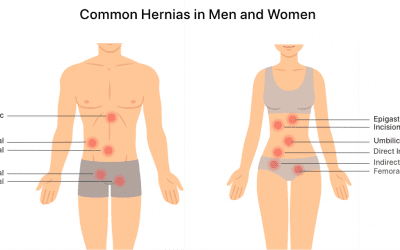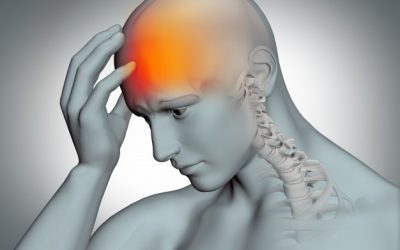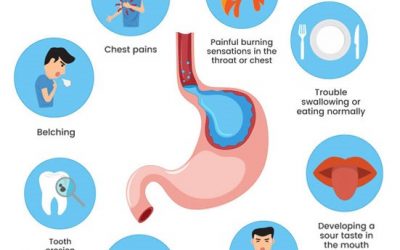SPORTS INJURY

Sports injuries are injuries that occur when engaging in sports or exercise. Sports injuries can occur due to overtraining, lack of conditioning, and improper form or technique. Failing to warm up increases the rise of sports injuries. Bruises, strains, sprains, tears, and broken bones can result from sports injuries. Soft tissues like muscles, ligaments, tendons, fascia, and bursae may be affected. Traumatic brain injury (TBI) is another potential type of sports injury.
You are at risk for sports injuries if you:
- HAVE NOT BEEN REGULARLY ACTIVE
- DON’T WARM UP PROPERLY BEFORE EXERCISE
- PLAY CONTACT SPORTS
TYPES OF SPORTS INJURIS:
Different sports injuries produce different symptoms and complications. The most common types of sports injuries include:
- SPRAINS:
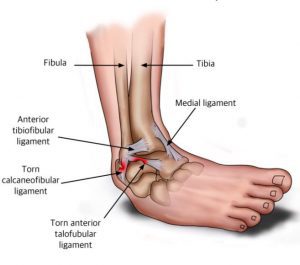 Overstretching or tearing the ligaments results in a sprain. Ligaments are pieces of tissue that connect two bones to one another in a joint.
Overstretching or tearing the ligaments results in a sprain. Ligaments are pieces of tissue that connect two bones to one another in a joint.
- STRAINS:
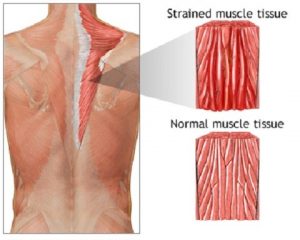
Overstretching or tearing muscles or tendons results in a sprain. Tendons are thick, fibrous cords of tissue that connect bone to muscle. Strains are commonly mistaken for sprains.
- KNEE INJURIES:

Any injury that interferes with how the knee joint moves could be a sports injury. It could range from an overstretch to a tear in the muscles or tissues in the knee.
- SWOLLEN MUSCLES:

Swelling is a natural reaction to an injury. Swollen muscles may also be painful and weak.
- ACHILLES TENDON RUPTURE:
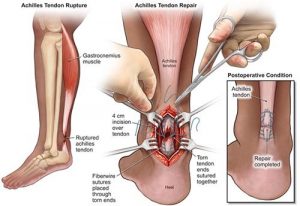
The Achilles tendon is a thin, powerful tendon at the back of your ankle. During sports, this tendon can break or rupture. When it does, you may experience sudden, severe pain and difficulty walking.
- FRACTURES:

Bone fractures are also known as broken bones.
- DISLOCATIONS:

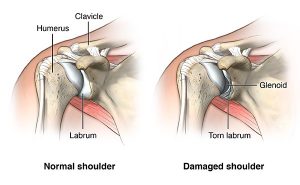
Sports injuries may dislocate a bone in your body. When that happens, a bone is forced out of its socket. This can be painful and lead to swelling and weakness.
- ROTATOR CUFF INJURY:

Four pieces of muscle work together to form the rotator cuff. The rotator cuff keeps your shoulder moving in all directions. A tear in any of these muscles can weaken the rotator cuff.
COMMON LIGAMENT INJURIES:
Ligaments are the fibrous, slightly stretchy connective tissues that hold one bone to another in the body. Because their function is stabilising the joint so that the bones move in the proper alignment. They are highly susceptible to injury. They also control the range of motion of a joint. They are what prevents your elbow from bending backward, but also help to perform the complex coordinated activities needed for sport. Ligaments are made of dense connective tissue consisting of a protein substance called collagen. The organisation of collagen fibres gives the ligament its tensile strength.
- HOW DOES LIGAMENTS INJURY OCCUR?
- A maximum deal of force is required to damage ligaments. In a collision sport like football this is easily done by opposition players or when a player catches his foot in the turf and his whole body weight goes over one joint. This force then produce the structural damage to the joint capsule and ligaments, which is known as ligament sprain.
- KNEE LIGAMENT INJURIES ARE THE MOST COMMON LIGAMENT INJURIES. CAUSES:
- Twisting your knee
- Getting hit on the knee
- Extending the knee too far
- Jumping and landing on a flexed knee
- Stopping suddenly when running
- Suddenly shifting weight from one leg to the other.
- SYMPTOMS – IN GENERAL:
- Pain, often sudden and severe
- A loud pop or snap during the injury
- Swelling
- A feeling of looseness in the joint
- Inability to put weight on the point without pain
- RISK FACTOR FOR SPORTS INJURY:
- Muscle tightness: Tight muscles are vulnerable to strain. Daily stretching exercises will reduce athletes risk of muscle tightness.
- Your are not in shape: Unexercised, weak muscles are less able to withstand the stress of exercise – and are therefore more prone to injury. Do not go over your limit when running. Take it slow.
- Muscle imbalance is one muscle group much stronger than its opposing muscle group? Then this imbalance can lead to a strain. This frequently happens with the hamstring muscles, which may become fatigued faster than other stronger calf muscles.
- Muscle Fatigue: Fatigue reduces the energy-absoring capabilities of muscles, making them more susceptible to injury.
- DIAGNOSIS OF SPORTS INJURY:Many Sports injuries cause immediate pain or discomfort. Others, like overuse njuries, might be noticed only after long-term damage. These injuries are often diagnosed during routine physical examinations or checkups.If you think you have a sports injury, your doctor will likely use the following steps to get Diagnosis. These include:
- PHYSICAL EXAMINATION:
- Your doctor may attempt to move the injured joint or body part. This helps them see how the area is moving, or how it’s not moving if that’s the case.
- MEDICAL HISTORY:
- This involves asking you questions about how you were injured, what you were doing, what you have done since the injury and more. If this is your first time visiting doctor, they may also ask for more thorough medical history.
- IMAGING TESTS:
- X-rays, MRIs, CT Scans, and ultrasound can all help your doctor and healthcare providers see inside your body. This help them confirm a sports injury diagnosis.
- PHYSICAL EXAMINATION:
If your doctor suspects you have a sprain or strain, they may recommend you follow RICE method.
SPORTS INJURY MANAGEMENT:
Whether it’s sprain or a twist, applying R.I.C.E. will help as a first aid measure.
The R.I.C.E. rule (Rest, Ice, Compression, and Elevation) will help with sprains, minor bruises, muscle soreness and painful movement.
WHAT IS R.I.C.E.?
R.I.C.E.R. is the golden standard and recommended formula for recovering from Injury.

WHAT R.I.C.E. DOES?
It prevents further injury to the damaged body part, immediately after the injury. If applied right away and correctly, R.I.C.E. can help to greatly reduce the recovery time.
- UNDERSTAND R.I.C.E. STEP BY STEP:
- REST:
- Rest is the first line of action for any sports injury. It prevents from hurting or damaging the joint or injured body part further. Avoid movement as much as possible to limit further injury. This does not only refer to resting immediately from activity after the injury, but also for a period of time following it. Talk to your doctor or physiotherapist about the recommended time frame.
- ICE:
- Cooling the tissue can help reduce pain, swelling and internal bleeding. You can conveniently cool the injured body part using a cold Elastoplast sport hot/cold pack or Elastoplast Sport cold spray. Do not apply the cold pack directly to the skin, especially if the skin is grazed, but wrap it into a towel and place it onto the injured area. Leave it in place for approximately 15-20 Minutes, not more. Then reapply it after a few hours.
- COMPRESSION:
- Wearing a stabilising brace, tape or bandage will prevent additional swelling. Make sure that the bandage is not too tight. Elastoplast’s crepe Bandage can provide support to strains and sprains, with light compression to reduce swelling.
- ELEVATION:
- Elevating the injured body part i.e. with a pillow, will help to reduce bleeding and swelling, as gravity will help to draw the fluid away from the injured area. Decreasing the swelling can also decrease pain. In lower limp injuries, you should try to keep the ankle above the level of the hip. Upper limb injuries can be elevated by use of a pillow or sling. For the first 48 Hours try to elevate the injured limb for as long as possible.
- REST:
THE TEMPERATURE TREATMENT – HOT OR COLD?
Cold packs and heat pads are among the most commonly used for sports injury management, even in orthopaedics in general. So which one is the right one to use for your sports injury, ICE or HEAT?
- COLD TREATMENT:
- Cold packs are often used after injuries such as ankle sprains have occurred. Applying a cold pack early and often for the first 48 hours will help minimize swelling. Decreasing swelling around and injury will help to control the pain. Cold treatments may also be used for chronic conditions, such as overuse injuries in athletes. In this case, cool the injured area after activity to help control inflammation. Never cool a chronic injury before activity. ELASTOPLAST SPORT HOT/COLD PACK and ELASTOPLAST SPORT COLD SPRAY can both be used to cool the injured area to reduce pain and swelling.
- HEAT TREATMENT:
- Heat treatments are used for chronic conditions to help relax and loosen tissues, and to stimulate blood flow to the area. Use heat treatments for chronic conditions, such as overuse injuries, before participating in activities.
- Heating tissues can easily be accomplished using a heat pad, which will relieve pain and stiffness, help decrease muscle spasms and increase mobility. Self-adhesive ELASTOPLAST THERAPEUTIC HEAT PADS are a convenient way to achieve this: The heat sensation will develop within 30 minutes, and can last up to 8 hours, helping to relax tight and cramped.
ICE or HEAT?
| ICE | HEAT | |
| WHEN TO USE IT | Use ice after an acute injury, such as an ankle sprain, or after activities that irritate a chronic injury, such as shin splints. | Use heat before activities that irritate chronic injuries such as muscle strains. Heat can help loosen tissue and relax injured areas. |
| HOW TO DO IT | There are several ways to ice an injury. Cooling packs are one of the most convenient methods. Also, a cooling spray which you can easily put in to your locker or sports bag will do the same job. | Self-Adhesive Therapeutic Heat pads are a convenient method. They will give off constant warmth at 40*C. Apply to the injured area and leave on to relax tight muscles, maximum 08 hours. |
| FOR HOW LONG | Apply ice treatments for no longer than 20 minutes at a time. Too much ice can do harm, even cause frostbite; more ice application does not mean more relief. | It is not necessary to apply a heat treatment for more than about 20 minutes at a time. Never apply heat while sleeping. |
HOW TO PREVENT SPORTS INJURIES?
Anyone who has been injured before will know that the best cure is prevention. There is some general advice that you can follow in order to eliminate some risk factors.
Also, make sure an old injury has completely recovered before working out again. If needed, consult your doctor or physiotherapist first before you start again.
- WARM UP PROPERLY:
- Do not start “Cold”. Do some simple muscular exercises after you have been running or exercising for a while and stretch your arms and legs until you loosen up.
- USE THE RIGHT EQUIPMENT:
- Make sure your shoes are comfortable, fit well and you are wearing warm, dry clothing and well fitting socks. If you need protection, or if you have weak bones, make sure ankle and knees are well protected by strapping tape or bandages.
- AFTER AN INJURY OR DURING RECOVERY:
- Do not do too much too soon. Pace yourself and build up your strength again slowly. If you feel a twinge of pain where you have been injured before, take a break.
- ALWAYS GIVE YOUR MUSCLES A CHANCE TO RECOVER BETWEEN WORKOUT SESSIONS:
- Don’t pack a week’s worth of activity in to a day or two. Try to maintain a moderate level of activity throughout the week.
- INCREASE YOUR EXERCISE LEVEL GRADUALLY:
- Don’t overdo it when starting. Check out the concept of graded activity. Accept and respect your body’s limits. You may not be able to perform at the same level you do 10 or 20 years ago. Modify your activities as necessary.
- REMEMBER TO WEAR SAFETY GEAR:
- Depending on the sport, this may mean knee or wrist pads or a helmet.
- Strive for a total body workout of cardiovascular, strength training, and flexibility exercises. Cross-training, for example, reduces injury while promoting total fitness.
DR. HARSHVARDHAN JADEJA Orthopaedic,
Joint Replacement Surgeon & Sports Medicine
Contact us @ 0278- 66 44 444 / 447
Departments
- Department Of Cardiology
- Neurology
- Nephrology
- Urology
- Spine Surgery
- Orthopaedics/ Trauma
- General Medicine
- General and Laparoscopic Surgery
- Gastrointestinal Surgery
- Bariatric And Diabetes Surgery
- Intensive Care/ Critical Care
- Pulmonology
- Obstetrics and Gynecology
- Oral and maxillofacial surgery
- Dental and Implant surgery
- Neuro Surgery
- Radiology
- Physiotherapy



